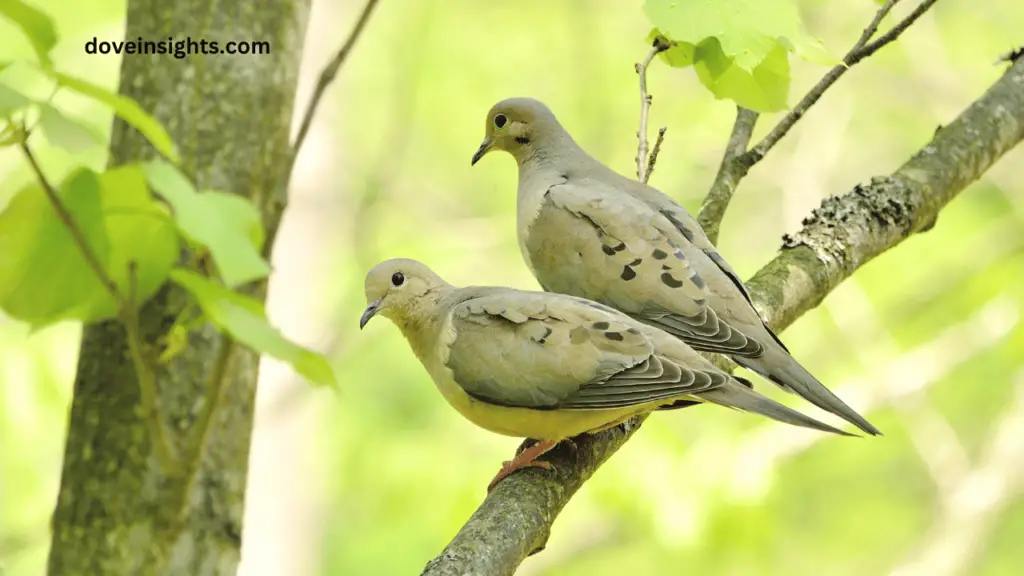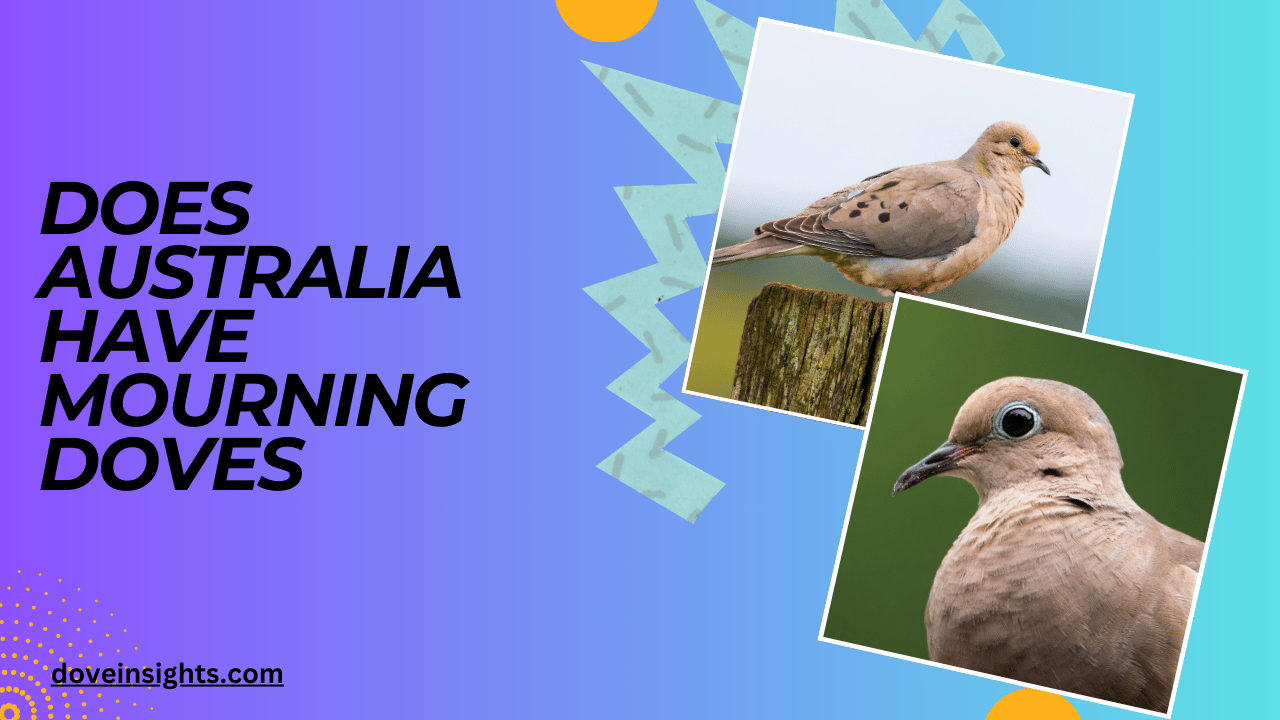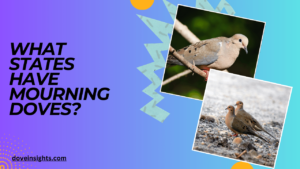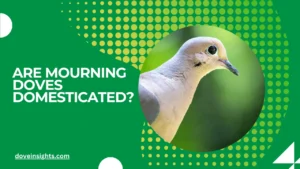Mourning doves are among the most recognizable birds in North America, often associated with peace and serenity due to their soft cooing and graceful flight.
However, if you’re in Australia and curious about whether you can spot these gentle creatures in the wild, you might be wondering: Does Australia have mourning doves?
This question raises interesting points about the distribution of bird species, migration patterns, and whether mourning doves have found a place in the diverse Australian environment.
Mourning doves are native to North America, so it’s natural to question whether this bird species has made its way to Australia. While the mourning dove may not be a native species in Australia, it is essential to explore how bird species travel, adapt, and whether they could establish a presence in new environments.
In this article, we will examine the relationship between mourning doves and Australia, their natural habitats, migration behaviors, and if they have a place in the unique Australian ecosystem.
Contents
Understanding the Mourning Dove’s Origin and Habitat
The mourning dove (Zenaida macroura) is native to North America, primarily found across the United States, Canada, and parts of Central America. Known for its gentle cooing, this bird has become a symbol of peace and love in various cultures.
Mourning doves are non-migratory in the southern parts of their range, but those in the northern regions do migrate to warmer climates during the colder months.
Mourning doves thrive in open habitats such as farmlands, woodlands, grasslands, and urban areas.
They prefer environments with a steady supply of seeds and grains, which form the core of their diet. Their adaptability allows them to coexist in both rural and urban landscapes, making them highly adaptable to different conditions. But, how does this relate to Australia?
Australia has a diverse range of habitats—from tropical rainforests to arid deserts—and is home to unique bird species. While the mourning dove is not native to Australia, its potential to survive in the country’s varied environments raises interesting questions about how this bird might adapt to a new ecosystem.
Are Mourning Doves Present in Australia?
Australia does not have mourning doves as a native species, and there are no records of these birds being naturally found in the wild. The continent is home to a number of dove species, but mourning doves have not established a permanent presence in Australia.
Some birds, like the common bronzewing and peaceful dove, are often confused with mourning doves due to their similar appearance and gentle behavior, but they are entirely different species.
It is possible that some mourning doves have been introduced to Australia as pets or as part of wildlife trade, but they have not become widespread or established in the wild.
The habitat requirements of mourning doves—such as open fields with access to food like seeds and grains—may be met in some parts of Australia, but other factors, such as the climate and predator pressures, may prevent them from thriving.
Despite this, the absence of mourning doves in the wild doesn’t mean that their presence couldn’t be possible in the future, especially with human intervention or due to shifting migration patterns caused by climate change.
Australia’s Native Doves and Pigeons
While mourning doves are not found in Australia, the country boasts a rich diversity of native dove and pigeon species.
For example, the diamond dove, common bronzewing, and peaceful dove are all native to Australia and have similar characteristics to mourning doves. These species have adapted well to the Australian climate and landscape, thriving in open woodlands, farmlands, and bushes.
The native pigeons of Australia, such as the bronzewing pigeon, often have similar behavior patterns to mourning doves. They feed on seeds and other grains and are frequently seen in areas where agriculture is common.
However, while they share many behavioral similarities, native Australian pigeons and doves have developed to be distinct from the North American mourning dove.
The peaceful dove in particular shares the mourning dove’s gentle and calm demeanor, making it the closest equivalent in terms of appearance and behavior, though it is a different species altogether.
The flying habits, cooing calls, and feeding preferences of these birds may remind some of the mourning dove, but they are unique to Australia’s environment.
Challenges for Mourning Doves in Australia
Although the mourning dove could theoretically survive in parts of Australia, several challenges would prevent it from establishing a permanent population.
First, climate differences between North America and Australia are significant. While mourning doves can thrive in temperate and subtropical climates, Australia’s extreme temperatures, particularly in the desert regions, would make it difficult for mourning doves to adapt without substantial human intervention.
Another factor to consider is the presence of predators. Australia is known for its unique predator population, which includes a variety of birds of prey, as well as domestic and wild animals.
The mourning dove would face competition from these predators, as well as from native bird species that occupy similar niches.
Finally, the limited migration opportunities might also inhibit the mourning dove’s expansion into Australia. Unlike some migratory birds, mourning doves do not have a strong instinct to fly long distances across oceans or continents.
Without the natural migration routes that connect North America with Australia, it is unlikely that mourning doves would establish a regular presence in the country.
The Future of Mourning Doves in Australia

While it seems unlikely that mourning doves will become a part of Australia’s natural bird population, there are always possibilities for the future.
If climate change continues to alter migration patterns, or if mourning doves are introduced for ornamental purposes or as pets, they might establish small, isolated populations in certain areas. However, this would likely require significant intervention.
Even without mourning doves, Australia continues to be home to a wide variety of beautiful and unique bird species.
Conservation efforts are already underway to preserve Australia’s native birds, and this could play a role in ensuring that non-native species like the mourning dove don’t disrupt local ecosystems.
As bird enthusiasts, it’s essential to remember that the arrival of new species—whether native or introduced—can have both positive and negative consequences for local wildlife.
While the mourning dove may not currently be part of Australia’s natural landscape, learning about the birds that thrive in this unique environment is equally important.
Conclusion
Australia does not have mourning doves as a native species, and they are unlikely to establish themselves in the wild due to the country’s unique climate and predation pressures.
Although mourning doves thrive in North America, they would face considerable challenges if introduced to Australia. While other dove species in Australia may share some of the mourning dove’s physical traits and behaviors, mourning doves remain an emblem of peace in their native regions.
Understanding the geography, migration, and ecology of birds like the mourning dove helps us appreciate the delicate balance that shapes our ecosystems.
For now, Australian birdwatchers can continue to enjoy the diverse range of native dove species while appreciating the beauty of mourning doves from afar.
FAQ’s
Do mourning doves live in Australia?
No, mourning doves are not native to Australia and are not found in the wild.
What birds in Australia resemble mourning doves?
The peaceful dove and the diamond dove share similar characteristics to mourning doves.
Can mourning doves adapt to the Australian climate?
Mourning doves would face challenges in adapting to Australia’s extreme temperatures and predators.
Are mourning doves migratory?
Yes, mourning doves are migratory birds, but their migration patterns do not extend to Australia.
Why don’t mourning doves live in Australia?
Mourning doves are not native to Australia, and the climate and predators pose significant challenges for their survival.
What are the main food sources for mourning doves?
Mourning doves feed primarily on seeds, grains, and sometimes fruits.








